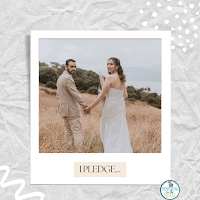I was talking to a teacher friend recently, and she told me a funny story about listening to a first grader lead his class in the Pledge of Allegiance years ago. "I lead the pigeons to the flag...."
We laughed about it and she told me I could use it for the reading comprehension passage I was writing. (Thanks, Lynda!) It wasn't the anecdote that got me thinking about the Pledge, though. It was years of watching my students mindlessly repeat words that were so familiar they didn't give them any thought.
I pledge allegiance to the flag...
Why do we say the Pledge of Allegiance?
I mean, how many sixth-graders know what allegiance means? Or what it means to pledge it? What are the origins of the pledge?
I believe that you shouldn't say anything, much less pledge it unless you understand what you're getting yourself into. Marriages have fallen apart because folks didn't figure out what they were committing to. So, it's important for students to think critically about what a pledge to their country means.
What is the history of the Pledge?
Lots of people think it was a product of the post-World War II era.
Actually, no. The first version of the Pledge was created 12 years after the Civil War. A Union veteran and employee of the New York Board of Education felt American students needed more national pride.
We give our heads and hearts to God and our country; one country, one language, one flag!
A differentiated reading passage about the Pledge:
That's why I wrote a passage for upper elementary and middle school students, differentiated into two levels to meet your student's needs.
You can use it at the beginning of the school year, or at any point, really, in a number of different ways:
- Have your students read the passage and discuss it as a whole class, so students can get to know each other, and how to discuss a topic
- Have your students read it in small groups and discuss it there, then present their thoughts to the class
- Have your students read it independently and answer the questions on the quiz
- Have your students read it independently or with a partner, answer the first 9 questions on the quiz and then work together or in small groups to create a classroom pledge
Click here for a FREE coloring page for the Pledge from talented artist, Melonheadz.




No comments
Post a Comment